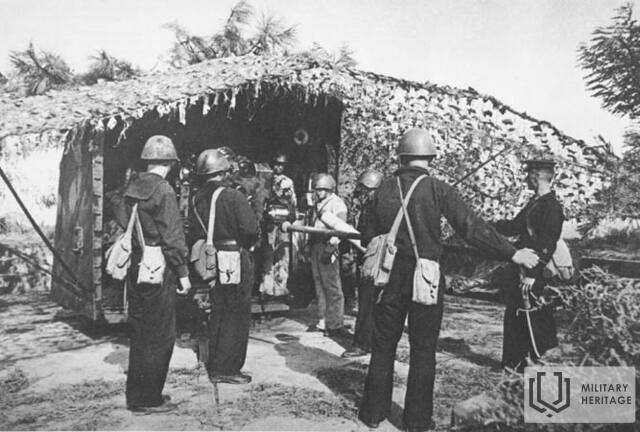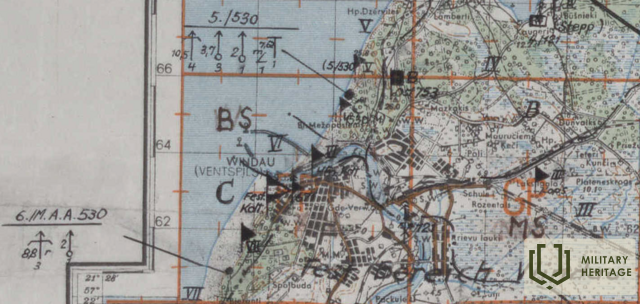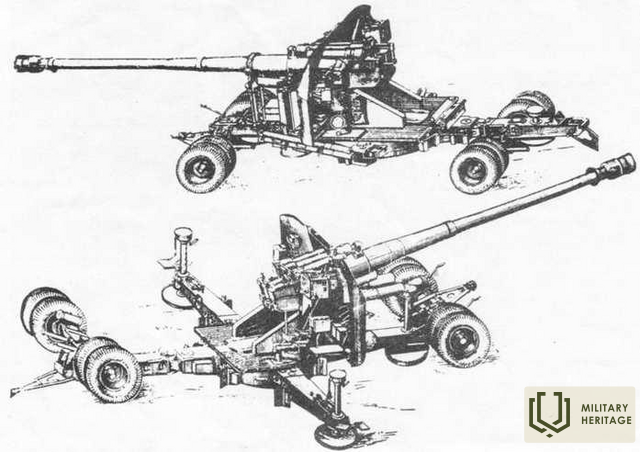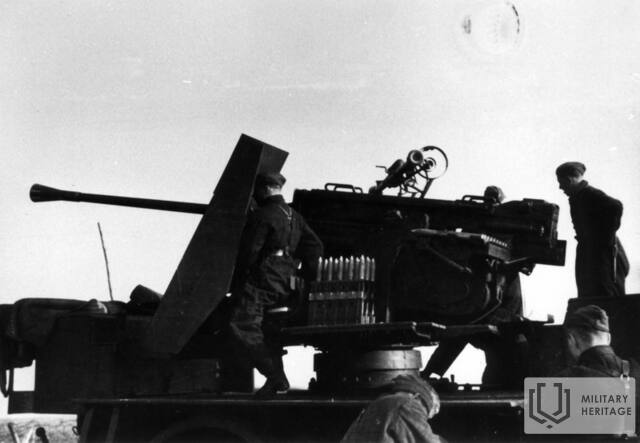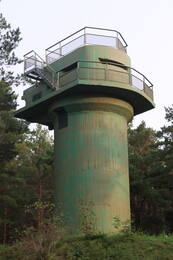The story of the fire control tower of the 46th coastal defense battery in Ventspils
The Ventspils Military Heritage Site is unique because it is one of the few coastal defence structures in Latvia and the Baltics that depict the history of World War II fortifications. It is also unique in that it is a military object built by the Soviet Union during the years of independence of the Republic of Latvia and in a way symbolises the inability of a small country to confront the superpowers on the eve of World War II. It is the only coastal defence battery that has survived so well, without historical layers and in its complete state of construction. The site shows the entire evolution of the Soviet military concept from 1939 until the withdrawal of Soviet troops in 1994.
To begin the construction of the 46th Coastal Defense Battery of the Red Banner Baltic Fleet of the Soviet Union (Краснознамённый Балтийский флот ВМФ СССР), the 35th Engineer/Construction Battalion of the Soviet Army arrived in Ventspils in November 1939. The builders settled in tents in the south of the city, in the area of Vasarnīcu Street. The battery included four B-13 type gun positions, a fire control tower, a command post, a water intake bunker, a generator/boiler house bunker and an engineering bunker. A military camp was established near the gun positions, in the area of Mētru and Sila Streets, where officers with their families, as well as other personnel serving the coastal defense battery, lived. By the beginning of the war, the coastal defense battery was completed and was combat-ready. The battery was subordinated to the Red Banner Baltic Fleet of the Soviet Union – SKBF and was serviced by the fleet's sailors.
On June 22, 1941, at four in the morning, Nazi German aviation carried out an air raid on the city, port and airfield. On June 24, German torpedo boats (possibly Schnellboot S-38 type) tried to attack the port of Ventspils, but with the help of fire from the 46th Coastal Defense Battery, the enemy was driven away, it was the first battle of this battery. On June 25, German torpedo boats made a second attack attempt on the port and ships located in the port area, but when the battery opened fire, the attack failed. On June 26, the Germans tried to take the city with the help of naval and airborne troops, the attack was repulsed, but the situation in the city was dangerous and on the morning of June 28, after receiving an order, the guns were blown up, and the Soviet soldiers left the city. It is known that German aviation carried out several air raids on the battery at the beginning of the war.
After the Red Army Baltic Fleet sailors left the battery, it was abandoned until 1944, when it was occupied by Nazi German troops, who dismantled the blown-up Russian guns and installed Flak-40 anti-aircraft guns in their place, which could also fire at naval targets.
Caponiers (an earthen rampart specially designed for military equipment) are dug alongside the constructed concrete positions so that the guns can be brought in, placed in position and fired, as well as quickly abandoned if they are discovered.
As modern military technology developed, cannons were replaced by missiles. The 46th Coastal Defense Battery was also preserved in the early 1960s, and the construction of a missile division's combat unit began alongside it.
www.ventspilsmuzejs.lv
Related timeline
Related topics
Related objects
Fire correction tower of the Ventspils 46th Coastal Defence Battery
The restored fire control tower of the 46th Coast Guard Battery in Ventspils is located on Saulrieta street and is available to visitors in the form of an observation tower. There are four artillery gun positions near the tower and it is the only World War II coastal defence battery in Latvia in such a good condition. Visitors can take the tower stairs to an outdoor viewing platform overlooking the sea. An information stand with a QR code is available next to the tower. You can use the QR to watch an animation about historical events. There is a new street leading to the tower, a large parking lot and a wooden footbridge that crosses the protected nature area next to the tower.
This military complex was built in 1939, marking the start of construction of USSR military bases in Latvia. The 46th Coast Guard Battery had four positions for the gun type Б-13. This battery had its first military engagement on 24 June 1941, when Ventspils harbour was attacked by German torpedo boats that were driven away from the shores of the Baltic Sea by battery fire. On June 28 the Soviet Army blew up the guns and left.




